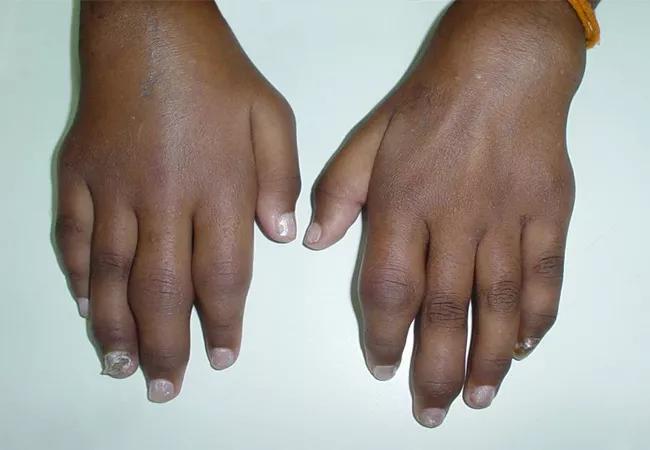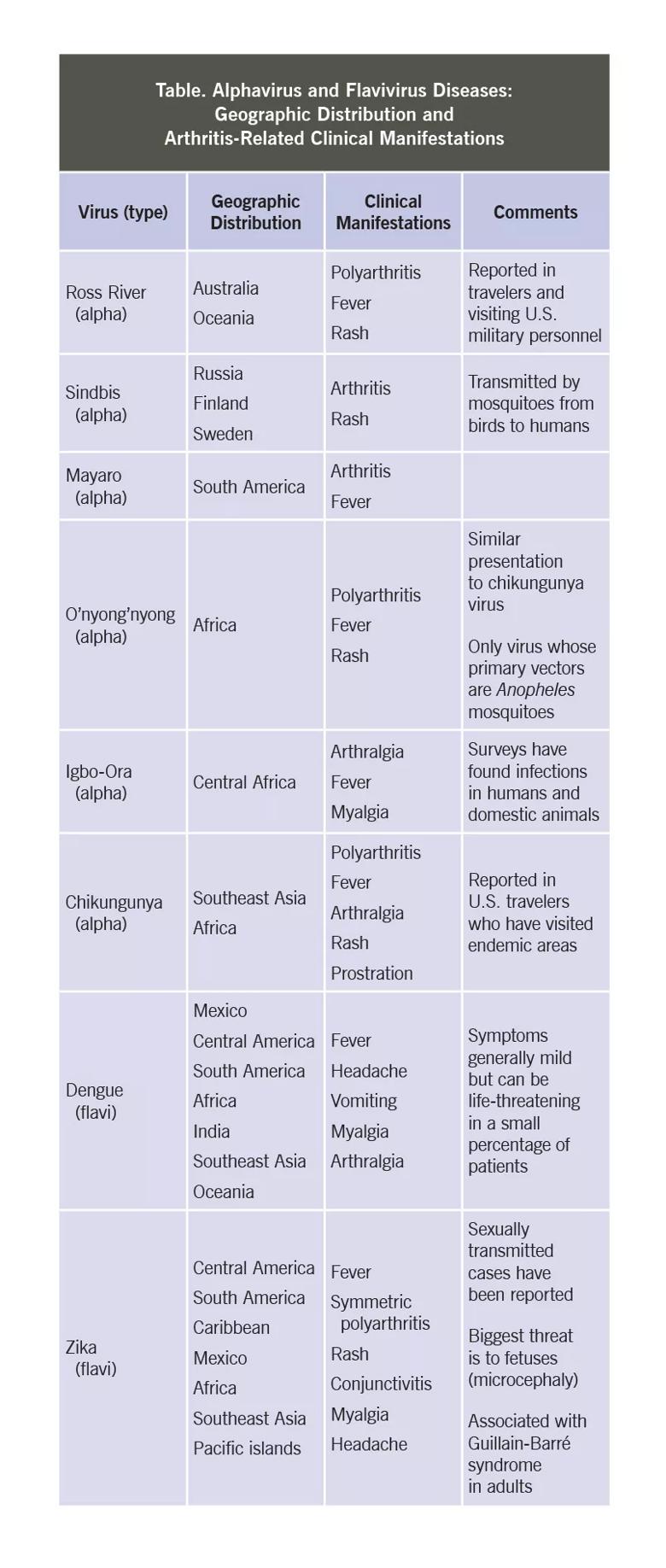Include these mosquito-borne illnesses in differential diagnosis

Advertisement
Cleveland Clinic is a non-profit academic medical center. Advertising on our site helps support our mission. We do not endorse non-Cleveland Clinic products or services. Policy
Chikungunya is not a silent infection. Its symptoms include severe illness in the first phase (seven to 10 days) with arthritis, arthralgia, fever, rash, joint swelling and prostration. It can be clinically severe, leaving some patients unable to move. Most patients will develop some or all of these symptoms. While many symptoms subside, in the second phase arthritis and arthralgia can linger, and patients often have a form of tenosynovitis involving wrists and fingers. One study showed that many patients endure chronic symptoms six months later.
Diagnosis of chikungunya is quite straight-forward as it is based on serologic identification of polymerase chain reaction (PCR), but clinicians must be aware of the virus to order diagnostic tests.
We are now seeing local outbreaks of chikungunya in the U.S., particularly in Florida. Fortunately, they are not widespread because the environments in which mosquitoes flourish – standing water, open garbage, homes with open windows (lack of screens) or unsanitary conditions – are uncommon in this country.
Other mosquito-borne infections prevalent in infected areas can mimic chikungunya, notably dengue fever and Zika. Other rare causes include malaria, leptospirosis and relapsing fever, all of which require consultation with an infectious disease specialist who has expertise in tropical illnesses.
Although most Zika patients are asymptomatic, they may present with rashes, arthritis, profound myalgia and headache. In other words, Zika can be identical to chikungunya at presentation and for about two weeks afterward. While musculoskeletal symptoms of Zika tend to ease after about two weeks, chikungunya’s tend to persist. Zika also tends to cause more neurological complications over time.
Advertisement

Dr. Calabrese is the R.J. Fasenmyer Chair of Clinical Immunology and Director of the R.J. Fasenmyer Center for Clinical Immunology at Cleveland Clinic.
Advertisement
Advertisement

Summit broadens understanding of new therapies and disease management

Program empowers users with PsA to take charge of their mental well being

Nitric oxide plays a key role in vascular physiology

CAR T-cell therapy may offer reason for optimism that those with SLE can experience improvement in quality of life.

Unraveling the TNFA receptor 2/dendritic cell axis

Nasal bridge inflammation, ear swelling and neck stiffness narrow the differential diagnosis

Genetic testing at Cleveland Clinic provided patient with an updated diagnosis

Proactive bone-health management may reduce morbidity and mortality